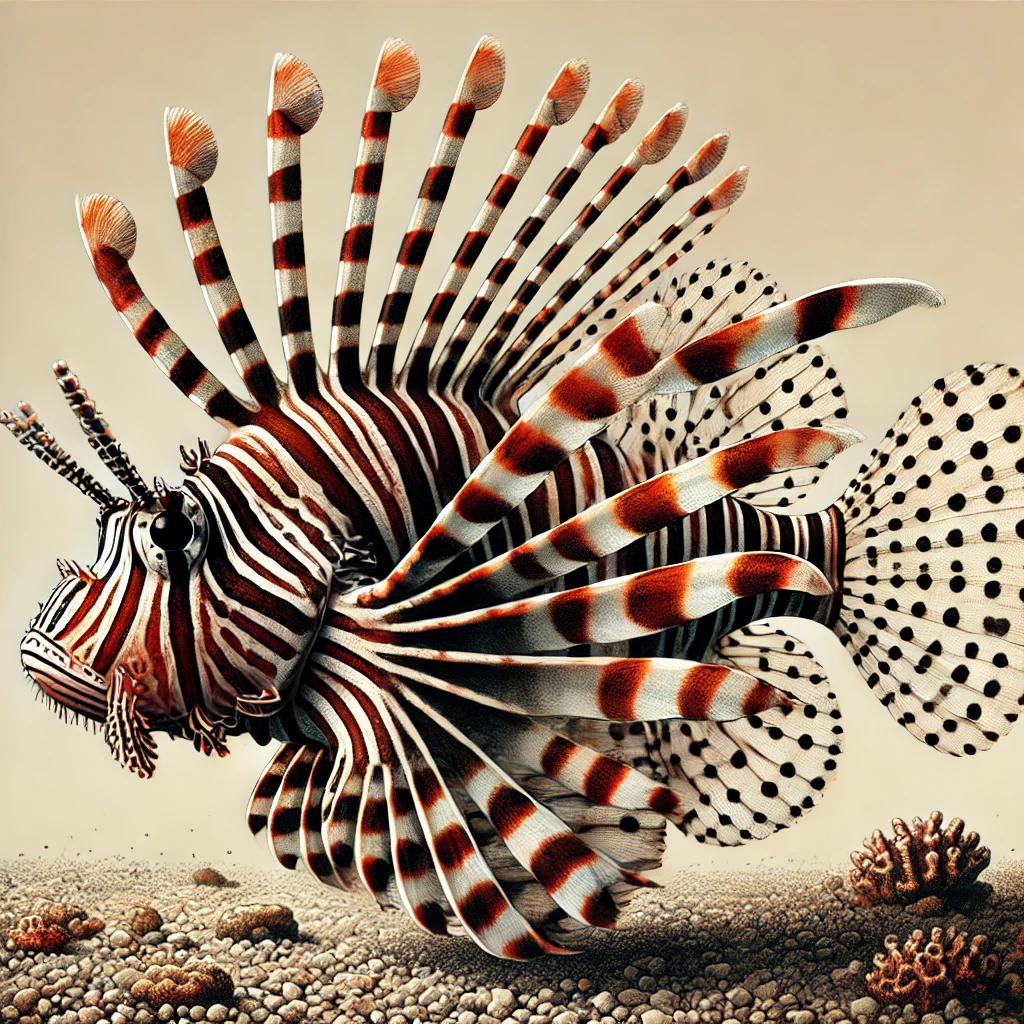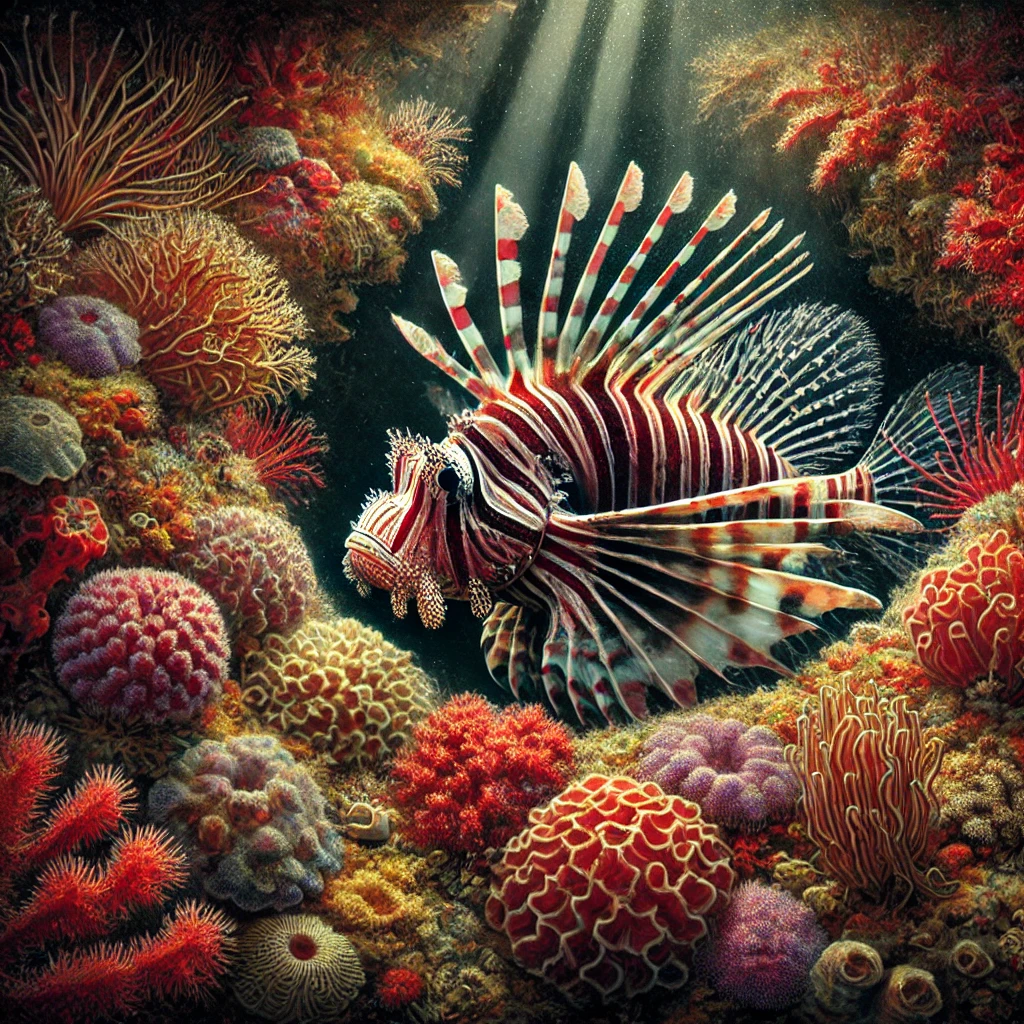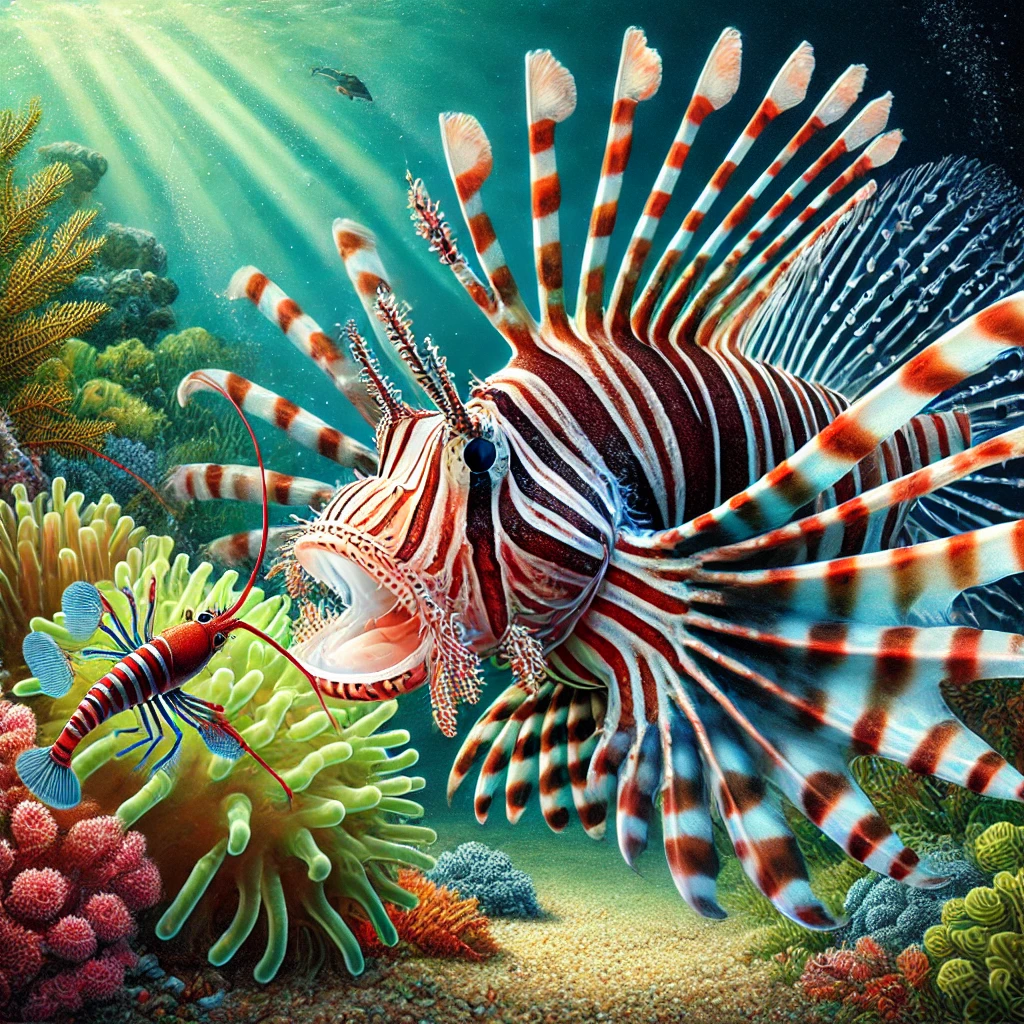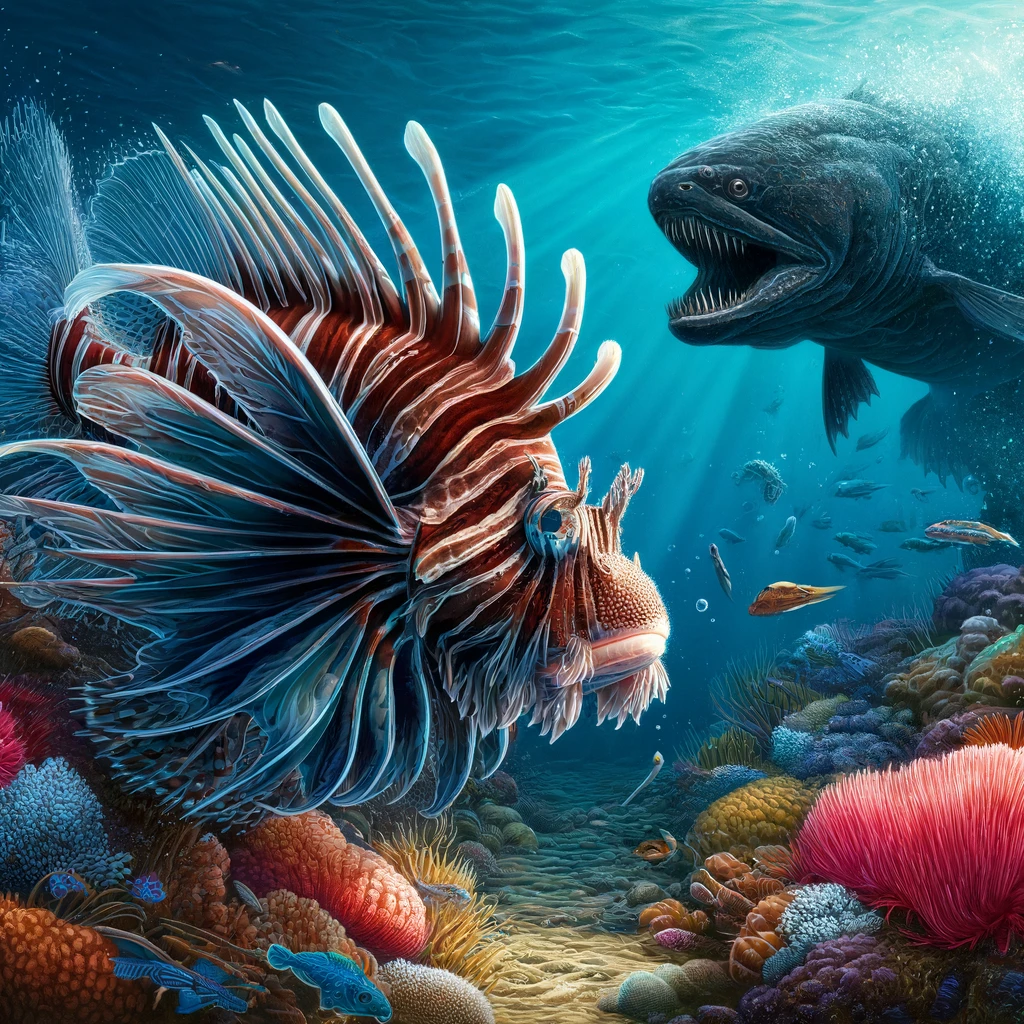
The underwater world is full of wonders, and one of its most captivating inhabitants is the dwarf lionfish. Known for its striking beauty and unique behavior, the dwarf lionfish has become a favorite among marine enthusiasts and aquarists alike. Let’s dive deeper into the fascinating world of this mesmerizing marine creature.
Overview : Dwarf Lionfish
The dwarf lionfish, belonging to the genus Dendrochirus, is a smaller cousin of the larger lionfish species. Native to the Indo-Pacific region, these fish can be found in coral reefs, lagoons, and rocky underwater structures. Their vibrant colors, long pectoral fins, and venomous spines make them both beautiful and formidable.
Physical Appearance

The dwarf lionfish is easily recognizable due to its elaborate and colorful fins that resemble feathers. Their coloration ranges from shades of red, brown, and orange to intricate patterns of white and black, providing excellent camouflage in coral reef environments. Despite their small size, averaging around 6-8 inches in length, their majestic appearance commands attention.
Behavior and Habitat
These nocturnal predators are relatively shy compared to their larger counterparts. They prefer to hide in crevices and among coral during the day, venturing out at night to hunt. Their diet consists primarily of small crustaceans and fish, which they capture using a lightning-fast strike facilitated by their large mouths.

Dwarf lionfish are solitary creatures, often found alone or in pairs. They are slow swimmers, relying on their camouflage and spines for defense rather than speed.
Eating Habits and Food Chain
Here is an image depicting a dwarf lionfish capturing and eating its prey, set in a vibrant coral reef environment.

Dwarf lionfish are carnivorous and play an essential role in the marine food chain. They primarily feed on small crustaceans, shrimp, and tiny fish. As ambush predators, they use their excellent camouflage to blend into their surroundings and strike unsuspecting prey with precision. While they are effective hunters, dwarf lionfish are not at the top of the food chain. Larger predators, such as groupers and moray eels, may prey upon them, making them both hunter and hunted in their ecosystem. Their presence helps maintain balance in coral reef environments by controlling populations of smaller marine organisms.

Here is an illustration depicting a dramatic moment where a dwarf lionfish is being preyed upon by a larger marine predator in a vibrant coral reef setting.
Venomous Spines
Like other lionfish, the dwarf lionfish possesses venomous spines that serve as a defense mechanism against predators. These spines can deliver a painful sting to humans, although it is rarely fatal. Care should always be taken when handling or observing these fish, especially in an aquarium setting.
In the Aquarium
The dwarf lionfish has gained popularity among aquarists due to its manageable size and stunning appearance. However, keeping one requires specific care and knowledge:
Tank Setup: A minimum tank size of 50 gallons is recommended, with plenty of hiding spots such as live rock and coral.
Water Parameters: They thrive in stable water conditions, with a temperature range of 72-78°F, a pH of 8.1-8.4, and salinity levels of 1.020-1.025.
Diet: Feeding them a diet of live or frozen shrimp, small fish, and other meaty foods is essential for their health.
Tank Mates: Due to their predatory nature, tank mates should be chosen carefully. Avoid housing them with small fish or invertebrates that they might view as prey.
Ecological Impact
In the wild, dwarf lionfish play an important role in maintaining the balance of reef ecosystems by controlling the populations of smaller fish and crustaceans. However, like their larger relatives, they have the potential to disrupt ecosystems if introduced to non-native environments. For instance, lionfish species are considered invasive in the Atlantic Ocean, where they have no natural predators.
Conclusion
The dwarf lionfish is a marvel of the marine world, combining beauty and intrigue with ecological importance. Whether observed in the wild or kept in an aquarium, these fascinating fish captivate all who encounter them. By understanding and respecting their natural behavior and habitat, we can ensure that these remarkable creatures continue to thrive for generations to come.
Some FAQs
Is the dwarf lionfish dangerous?
The dwarf lionfish has venomous spines that can cause a painful sting, but their venom is rarely life-threatening. Care is necessary while handling them.
What do dwarf lionfish eat in captivity?
They eat a carnivorous diet, including shrimp, small fish, and crustaceans. A varied diet ensures their health.
Can dwarf lionfish live with other fish?
Yes, but only with larger, non-aggressive species that they won’t view as prey.
